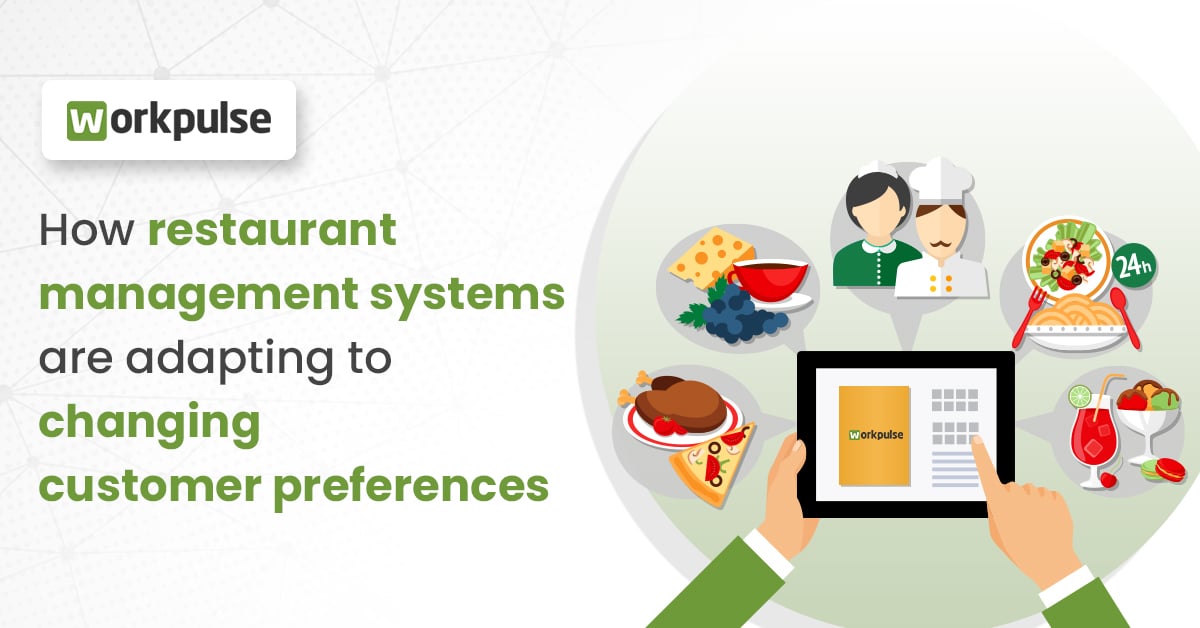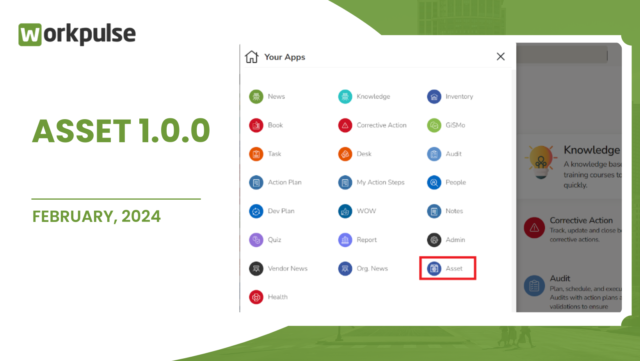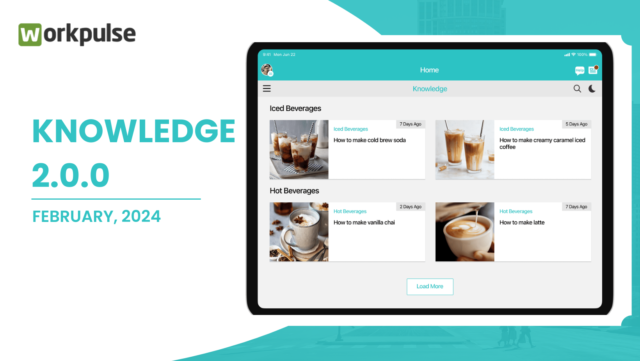In today’s fast-paced and ever-evolving restaurant industry, staying ahead of the curve has become an imperative for achieving lasting success. The world of dining is no longer confined to the traditional paradigms; instead, it’s a realm of constant change driven by shifting customer preferences, dynamic culinary trends, and rapidly advancing technologies. Amidst this whirlwind of transformation, the role of Restaurant Management Systems (RMS) has become more critical than ever.
Restaurant owners and managers find themselves in a race to not only meet customer expectations but to exceed them, and the key lies in embracing innovation and adaptability. As diners become more discerning, seeking unique experiences, healthier options, and personalized services, the restaurant industry is undergoing a seismic shift. Gone are the days when a static menu and traditional operations were sufficient; today’s restaurant landscape demands a proactive and flexible approach.
Enter Restaurant Management Systems, the digital backbone of modern dining establishments. RMS have risen to prominence as the bedrock upon which restaurants build their strategies to cater to evolving customer preferences. These systems offer an array of tools and features designed to empower restaurants in seamlessly adapting to changing trends while maintaining the core principles of efficiency and excellence.
From personalized ordering experiences to dynamic menu adjustments, efficient inventory management to real-time customer engagement, RMS serve as the linchpin that harmonizes the intricate dance between customer desires and operational realities. These systems, powered by advanced technologies like artificial intelligence and data analytics, enable restaurants to not only keep up with shifting preferences but also anticipate them, creating a symbiotic relationship between customer expectations and restaurant offerings.
In this exploration of how Restaurant Management Systems are shaping the modern culinary landscape, we delve into the myriad ways these platforms are not only adapting to changing customer preferences but also driving innovation in the industry. Join us as we navigate the dynamic currents of culinary evolution and technological revolution, uncovering the transformative power of RMS in enhancing efficiency and personalization in the restaurant experience.
How customer preferences have evolved in the recent past?
Customer preferences have undergone a remarkable evolution over the years, shaped by changing lifestyles, global trends, and an increased focus on health and sustainability. Today’s diners are not just seeking a meal; they’re seeking an experience, a connection, and an expression of their values. Some key trends in customer preferences include:
Demand for Convenience: Busy schedules and on-the-go lifestyles have fueled the demand for convenience. Customers are seeking options that offer quick and easy access to food. This has led to the rise of delivery services, online ordering platforms, and curbside pickup, allowing patrons to enjoy their favorite meals with minimal effort.
Digital Transformation: The digital age has brought about a digital-savvy customer base. Customers now expect restaurants to have a strong online presence, including user-friendly websites, mobile apps for ordering and reservations, and active social media engagement. Restaurants that embrace technology and provide seamless digital experiences gain a competitive edge.
Health and Wellness Consciousness: There’s a growing emphasis on health and wellness. Customers are more conscious about their dietary choices and are seeking healthier options on menus. Restaurants are responding by offering nutritious and customizable dishes, catering to various dietary preferences, including vegetarian, vegan, and gluten-free.
Customization and Personalization: The era of one-size-fits-all menus is fading. Customers desire personalized experiences that align with their preferences. Restaurants are implementing customization options, allowing patrons to build their own meals and adjust ingredients according to their taste and dietary needs.
Ethical and Sustainable Practices: Concerns about environmental impact and ethical practices have prompted customers to support restaurants that prioritize sustainability. Restaurants are sourcing local, organic ingredients, reducing food waste, and adopting eco-friendly packaging. These efforts resonate with conscious consumers.
Virtual Reality and Augmented Reality: The incorporation of virtual reality (VR) and augmented reality (AR) is transforming how customers interact with menus. Visualizing dishes through AR, exploring restaurant interiors through VR, and even placing virtual orders are becoming exciting possibilities.
Innovative Payment Solutions: The days of waiting for the check are waning. Customers prefer hassle-free payment methods, such as mobile wallets and contactless payments. Restaurants are integrating digital payment solutions to enhance the checkout experience.
Culinary Diversity and Fusion: Globalization has expanded culinary horizons. Customers are eager to explore diverse flavors and cuisines from around the world. Restaurants are experimenting with fusion dishes and international ingredients to cater to adventurous palates.
Social Responsibility and Community Engagement: Consumers are increasingly inclined to support businesses that give back to the community. Restaurants are organizing charity events, collaborating with local artisans, and engaging in social initiatives to build strong community relationships.
The evolution of customer preferences in the restaurant industry underscores the need for adaptable restaurant management systems. To meet these changing demands effectively, modern restaurant management systems must offer features that cater to online ordering, customization, health-conscious offerings, sustainability tracking, and seamless digital experiences. The restaurant landscape is evolving, and those who embrace these shifts stand to gain loyal customers and long-term success.
How Workpulse rOS empowers restaurant owners to fulfill customer needs
Workpulse understands the dynamic shifts in customer preferences within the restaurant industry, and its comprehensive restaurant operating system (rOS) is designed to meet these evolving demands. Let’s explore how each of the four modules of Workpulse rOS aligns with these customer preferences:
Audit Management Module:
- Being Prepared for Surprise Inspections: Workpulse’s rOS equips restaurants to be prepared for surprise inspections. With real-time data tracking and documentation, restaurants can confidently showcase their adherence to regulatory standards during surprise visits, earning trust and loyalty from both customers and authorities.
- Streamlining Regular Auditing: The module offers a streamlined approach to regular audits, making it easier for restaurants to consistently assess their operations. This not only ensures compliance but also contributes to continuous improvement, which resonates with customers who appreciate an establishment’s commitment to quality.
- Unified Dashboard for Task Status: Workpulse’s rOS provides a unified dashboard where restaurants can monitor the status of tasks related to audits. Whether it’s verifying compliance, addressing corrective actions, or completing checklists, the single dashboard offers a real-time overview, streamlining the process and enhancing efficiency.
- Automated Notifications: Automated notifications within the Audit Management module ensure that everything in your QSR is checked systematically and timely. This automated approach aligns with modern customer preferences for food safety and quality assurance. Customers can dine with confidence, knowing that the restaurant consistently maintains high standards.
- Proactive Risk Mitigation: Workpulse’s rOS enables restaurants to proactively identify and address potential compliance gaps. By automating notifications and tracking, restaurants can swiftly rectify any issues, ensuring that they are well-prepared for audits and surprise inspections.
Brand Standards and Food Safety Compliance Module:
- Customization and Personalization: Workpulse’s rOS empowers restaurants to tailor their compliance checklists according to their unique brand standards. This means that different outlets can accommodate regional tastes, dietary preferences, and special requirements, enhancing the personalized experience for each customer.
- Ethical and Sustainable Practices: With digital checklists and paperless processes, restaurants reduce their environmental footprint. This aligns perfectly with the increasing customer demand for ethical and sustainable practices, showing that the restaurant is not just serving great food but also contributing positively to the planet.
Guest Feedback and Recovery Module:
- Experiential Dining: The Guest Feedback and Recovery module captures real-time insights into diners’ experiences. Restaurants can proactively address any issues and provide exceptional service, creating a memorable dining experience that customers crave and appreciate.
- Customization and Personalization: By responding promptly to guest feedback, restaurants can show they value their customers’ opinions. This ability to adapt and personalize offerings based on feedback enhances customer loyalty and satisfaction, forming a strong connection between the diner and the establishment.
- Loyalty Programs Integration: Workpulse’s rOS can integrate with loyalty programs, allowing restaurants to reward and recognize loyal customers. This resonates well with modern customers who seek more than just a meal – they seek an ongoing relationship with their favorite dining spots.
Facilities and Equipment Maintenance Module
- Convenience for QSR Operations: Workpulse’s mobile app ensures that restaurants can manage maintenance tasks efficiently. Whether it’s equipment upkeep or facility repairs, all can be coordinated and tracked remotely, reducing operational disruptions and keeping the dining experience smooth.
- Health and Wellness Consciousness: Well-maintained equipment and facilities are crucial for food safety and hygiene. By consistently upholding these standards, restaurants align with customers’ health-conscious preferences, reassuring them that their well-being is a top priority.
- Real-time Notifications: The mobile app allows restaurants to receive instant notifications about maintenance needs or equipment malfunctions. This proactive approach guarantees a seamless dining experience, which modern customers greatly appreciate.
Fulfilling customer needs with Workpulse rOS
In today’s dynamic restaurant landscape, where customer expectations are evolving at an unprecedented pace, it is more imperative than ever for establishments to rise to the challenge and deliver exceptional experiences. Modern customers are not just seeking delicious food; they desire a seamless journey from the moment they step through the door to the time they leave, along with a deep sense of trust and satisfaction.
Workpulse’s rOS stands as a beacon of innovation and adaptability in the face of these evolving preferences. With its comprehensive modules, it empowers restaurants to meet and exceed customer expectations at every touchpoint.
Investing in Workpulse rOS means investing in the satisfaction and loyalty of your customers. It’s not just about meeting their preferences – it’s about anticipating them, exceeding them, and creating a dining experience that resonates long after the meal is over. With Workpulse rOS as your ally, the journey towards customer satisfaction is not just an aspiration; it becomes a daily reality. Book a demo today to know more.




